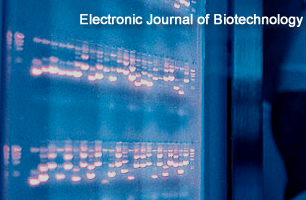Abstract
Background: Cellulose can be converted to ethanol by simultaneous saccharification and fermentation (SSF). The difference between the optimal temperature of cellulase and microbial fermentation, however, has been identified as the critical problem with SSF. In this study, one fungal strain (AnsX1) with high cellulase activity at low temperature was isolated from Antarctic soils and identified as Verticillium sp. by morphological and molecular analyses.
Results: The biochemical properties of crude AnsX1 cellulase samples were studied by filter paper cellulase assay. The maximum cellulase activity was achieved at low temperature in an acidic environment with addition of metal ions. Furthermore, AnsX1 cellulase demonstrated 54-63% enzymatic activity at ethanol concentrations of 5-10%. AnsX1 cellulase production was influenced by inoculum size, carbon and nitrogen sources, and elicitors. The optimal culture conditions for AnsX1 cellulase production were 5% inoculum, wheat bran as carbon source, (NH4)2SO4 as nitrogen source, and sorbitol added in the medium.
Conclusions: Our present work has potential to enable the development of an economic and efficient cold-adapted cellulase system for bioconversion of lignocellulosic biomass into biofuels in future.
Upon acceptance of an article by the journal, authors will be asked to transfer the copyright to Electronic Journal of Biotechnology, which is committed to maintain the electronic access to the journal and to administer a policy of fair control and ensure the widest possible dissemination of the information. The author can use the article for academic purposes, stating clearly the following: "Published in Electronic Journal of Biotechnology at DOI:10.2225/volXX-issueX-fulltext-XX".
The Copyright Transfer Agreement must be submitted as a signed scanned copy to biotec@ucv.cl. All authors must send a copy of this document.
